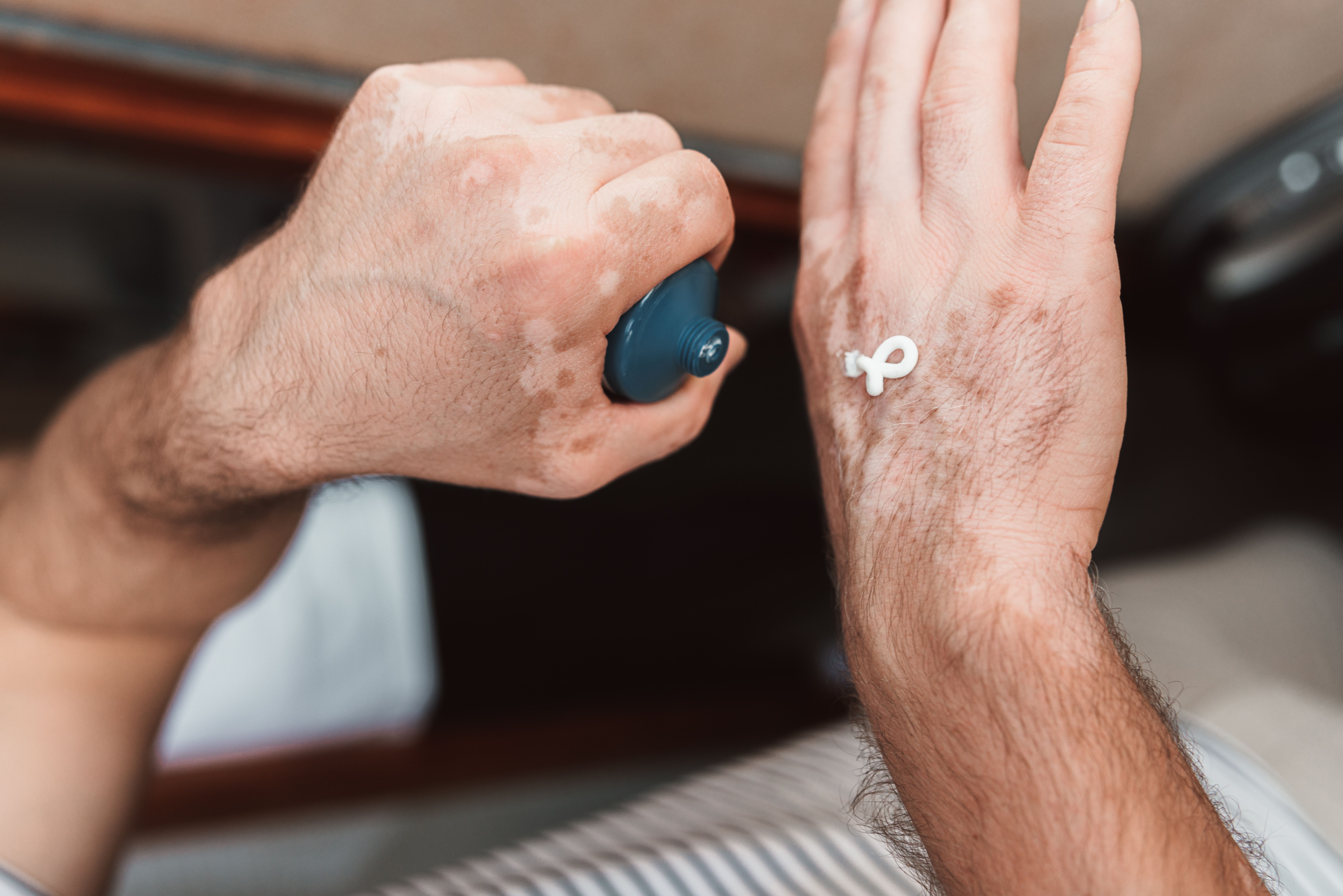- General Dermatology
- Eczema
- Alopecia
- Aesthetics
- Vitiligo
- COVID-19
- Actinic Keratosis
- Precision Medicine and Biologics
- Rare Disease
- Wound Care
- Rosacea
- Psoriasis
- Psoriatic Arthritis
- Atopic Dermatitis
- Melasma
- NP and PA
- Skin Cancer
- Hidradenitis Suppurativa
- Drug Watch
- Pigmentary Disorders
- Acne
- Pediatric Dermatology
- Practice Management
Microneedling With and Without N-acetylcysteine Prove Effective in Patients With Persistent Vitiligo
While the addition of NAC yielded greater improvement than microneedling alone, this difference was not significant.
Microneedling, whether in combination with N-acetylcysteine (NAC) or as monotherapy, is effective in patients with persistent vitiligo lesions, according to a study published in the Journal of Cosmetic Dermatology.1 However, despite evidence that microneeding combined with NAC led to a higher improvement rate, researchers noted that the difference between combination and monotherapy was not significant.
Traditional treatments often fall short in achieving satisfactory results, wrote researchers Atefi et al. Prior research indicates that both autoimmunity and oxidative stress are significant factors in the onset and progression of vitiligo.2 Oxidative stress begins when enzymatic activity in glutathione peroxidase decreases and there's a drop in glutathione production. NAC which possesses antioxidant properties, acts as a precursor for synthesizing glutathione, countering this stress.3
The study aimed to investigate the efficacy of meso-microneedling with NAC ampoules and topical NAC cream as a potential treatment for vitiligo, given the antioxidant properties of NAC alongside microneedling's ability to induce melanocyte migration and enhance drug delivery.
The clinical trial, conducted in a double-blind, randomized, controlled design, recruited participants from individuals presenting symmetrical vitiligo lesions on their trunk, limbs, or face. The recruitment took place at the dermatology clinic of Rasool Akram Medical Complex over the span of one year from September 2020 to September 2021.
Participants meeting inclusion criteria, such as stable vitiligo lesions without progression in the past year and no prior treatment in the last 2 months, were enrolled in the trial. Exclusion criteria included allergies to NAC, pregnancy, history of hypertrophic or keloid scars, and the presence of pathological lesions or infections at the treatment site.
The treatment protocol was comprised of 6 sessions of meso-microneedling with the NESOYA microneedling device, spaced 2 weeks apart, followed by a 1-month follow-up period.
In the intervention group, NAC ampoules (5%) were applied post-microneedling, while the control group received distilled water. Additionally, topical application of 4.7% NAC in an Eucerin base was administered between sessions to sustain therapeutic impact.
Lesions were assessed for extent, repigmentation grade, and tensity using standardized scales at baseline, 2 weeks after the third session, and 1 month post-treatment cessation.
Out of 29 evaluated patients, 22 met inclusion criteria, resulting in 46 lesions completing the treatment process. The average age of participants was 36.4 years, with a balanced gender distribution. The mean satisfaction score with treatment was 4.6 out of 10, indicating moderate satisfaction among patients.
Lesion extent decreased over the treatment period, with the intervention group showing a higher rate of improvement compared to the control group. However, statistical significance was not achieved between the groups. Additionally, there were no instances of lesion recurrence during the 1-month follow-up period. This, researchers noted, is suggestive of the treatment's stability.
Repigmentation grade scores showed improvement in both groups, with the intervention group exhibiting a slightly higher rate of improvement. However, these differences were not statistically significant.
Tensity of lesions also improved over the treatment period, particularly in acral lesions, where significant improvement was observed compared to non-acral lesions.
While improvements were observed in lesion extent, repigmentation grade, and tensity, statistical significance was not achieved, possibly due to the small sample size.
"While the combination with mesotherapy and topical NAC showed potential, larger studies with extended treatment and follow-up periods are essential for conclusive evidence in this chronic condition," according to Atefi et al. "Future research should particularly focus on non-acral lesions and consider larger sample sizes to further validate these findings."
References
- Atefi N, Ziaeifar E, Seirafianpour F, et al. Evaluation of efficacy and safety of vitiligo treatment with micro-needling combined with N-Acetylcysteine and micro-needling alone: A double-blinded randomized controlled clinical trial. J Cosmet Dermatol. March 12, 2024. Accessed April 2, 2024. doi:10.1111/jocd.16274
- Cotter MA, Thomas J, Cassidy P, et al. N-acetylcysteine protects melanocytes against oxidative stress/damage and delays onset of ultraviolet-induced melanoma in mice. Clin Cancer Res. 2007. Accessed April 2, 2024.
- Kasperczyk S, Dobrakowski M, Kasperczyk A, Ostałowska A, Birkner E. The administration of N-acetylcysteine reduces oxidative stress and regulates glutathione metabolism in the blood cells of workers exposed to lead. Clin Toxicol. 2013. Accessed April 2, 2024.

